
Byzantine art is a vast realm of unique artistic heritage of humanity
Byzantine art is an important regional part of medieval art, based on the cultural traditions of Christianity and the Roman Empire. Byzantine art encompasses a vast number of artistic works created over more than 1000 years in the Eastern Mediterranean region. For many centuries, it had a profound influence on the cultural life not only of Europe but also on a significant part of North Africa and the Middle East.
Byzantine art had a distinct imperial and religious orientation and, over its thousand-year history, went through periods of both ascent and decline. It developed against the backdrop of the ongoing struggle between Constantinople and Rome for supremacy in the Christian world, resulting in the split of the unified church into Catholic and Orthodox branches.
Byzantine art. Byzantine ivory box, 10th-11th centuries
Key Periods of Byzantine Art
Byzantine art is traditionally divided into the following main periods:
- Early Christian or pre-Byzantine (3rd-6th centuries).
- Early Byzantine (6th-8th centuries).
- Iconoclastic (8th - early 9th century).
- Macedonian Renaissance (early 9th - mid-11th century).
- Comnenian Renaissance (mid-11th - late 12th century).
- Palaeologan Renaissance (late 12th - mid-15th century).
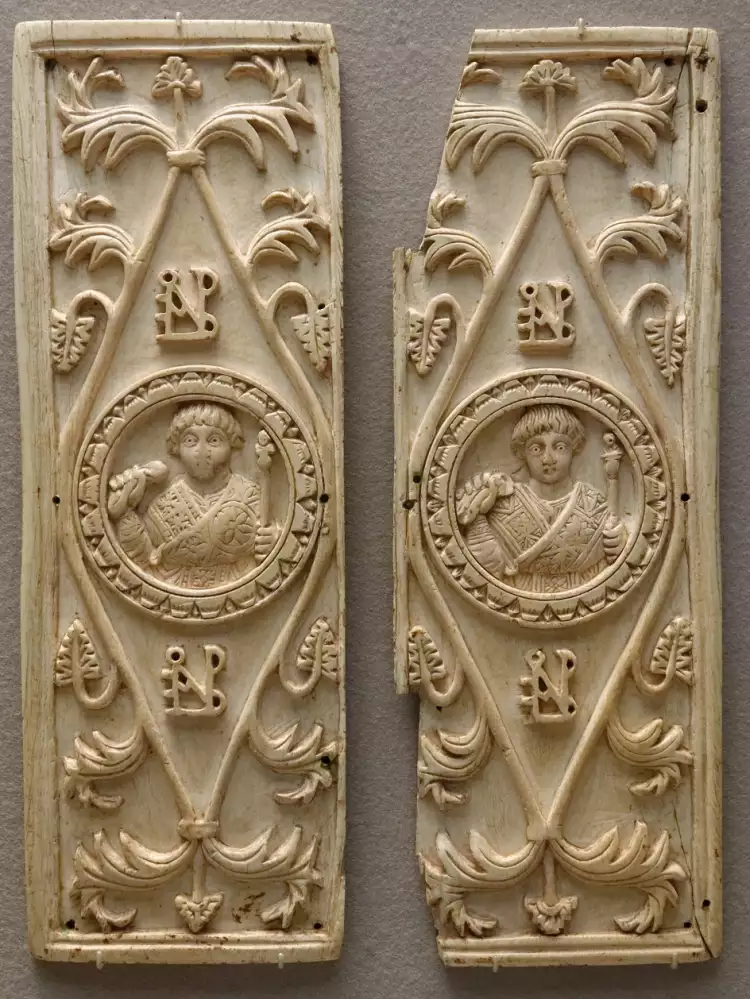 Byzantine art. Diptych by Flavius Areobindus, 506
Byzantine art. Diptych by Flavius Areobindus, 506
The foundation of Byzantine art in the early Christian period was laid by two significant historical events: the public recognition of Christian worship in the Roman Empire in 313 AD and the relocation of the state capital to Constantinople in 330 AD. This served as a powerful impetus for the formation of a new center of cultural and political life in the Mediterranean region. Over the following two centuries, under the pressure of invaders, Rome, Alexandria, and Antioch, which were the main rivals of Constantinople in the competition for cultural dominance in the region, fell. From this time, Byzantine art played a crucial role in the cultural life of Europe for a long time.
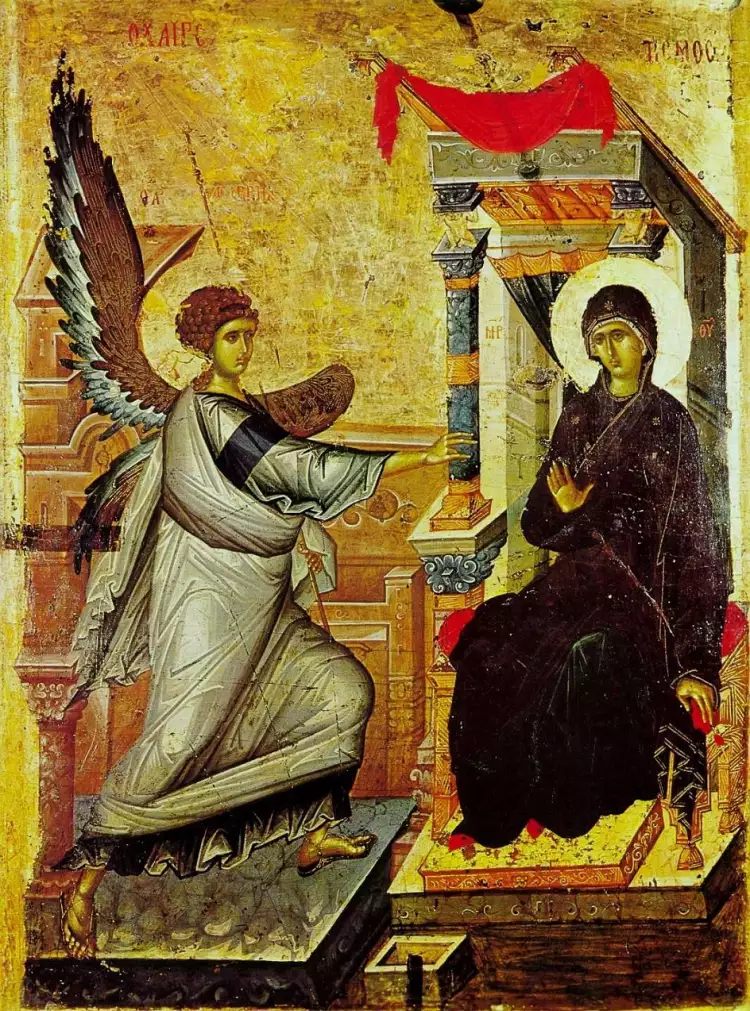 Byzantine art. Icon of the Annunciation from the Church of St Kliment in Ohrid, 14th century
Byzantine art. Icon of the Annunciation from the Church of St Kliment in Ohrid, 14th century
The reign of Emperor Justinian I (527-565) at the beginning of the early Byzantine period is rightly considered the "Golden Age" in the history of Byzantium. It was marked not only by the maximum expansion of the state's borders but also by the grand construction of temples and rapid development in various artistic fields. However, soon, a period of political and economic decline set in, marked by the loss of most of the conquered territories.
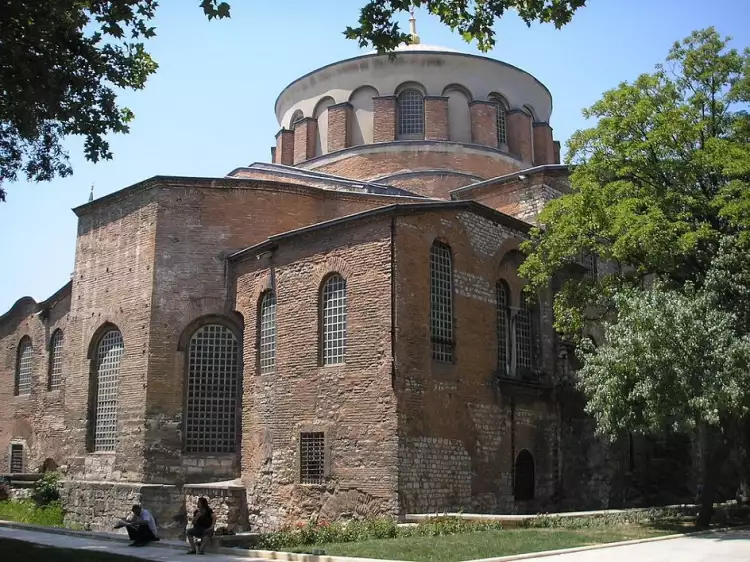 Byzantine art. Church of St Irene in Constantinople, 4th century
Byzantine art. Church of St Irene in Constantinople, 4th century
The Iconoclastic period, lasting for over a century, caused a serious crisis in icon painting. During this time, figurative art faced significant oppression from the Church, and many icons, frescoes, and mosaics were mercilessly destroyed. Anthropomorphic images in the decoration of churches gave way to ornamental art with elements of plant and animal themes.
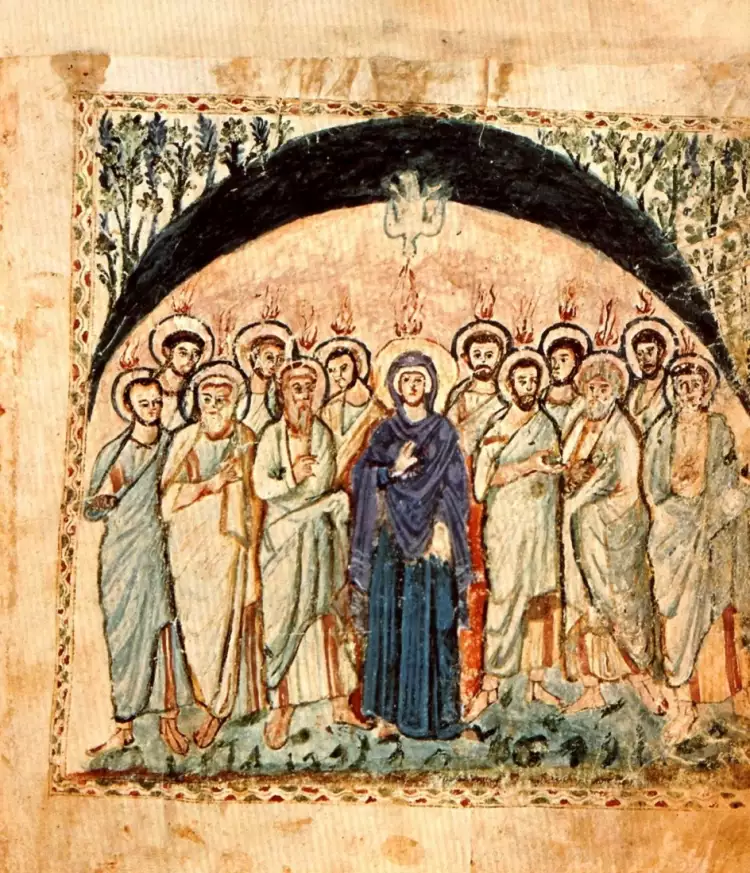 Byzantine art. Miniature from the Gospel of Rabula, 6th century
Byzantine art. Miniature from the Gospel of Rabula, 6th century
The dark times of iconoclasm in the early 9th century in Byzantine art were followed by the era of the Macedonian Renaissance. Architectural forms were standardized, figurative painting and sculpture were revived, and the ancient art of ivory carving technique was reinstated.
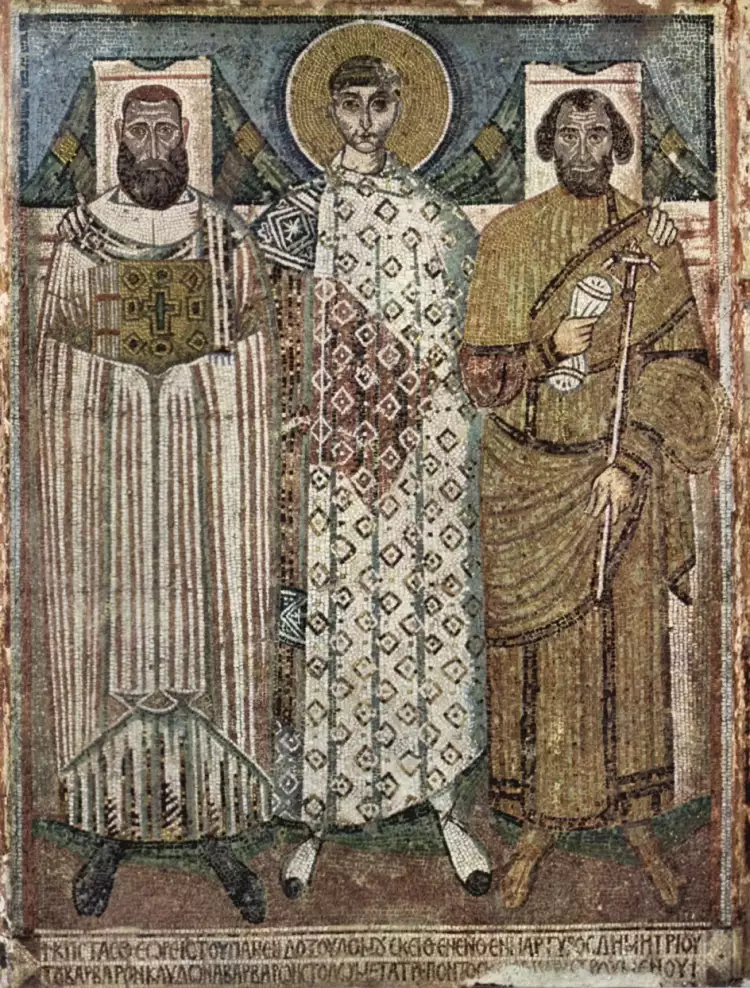 Byzantine art. Mosaic from the Church of St Demetrios in Thessaloniki, late 7th-early 8th century
Byzantine art. Mosaic from the Church of St Demetrios in Thessaloniki, late 7th-early 8th century
The period of the Comnenian Renaissance also had a beneficial impact on Byzantine art. Within the empire, an era of stability followed serious upheavals, and artists felt powerful support from the authorities. It was a time of returning to the ideals of classical art, painting pictures and icons in a realistic classical style.
The Palaeologan Renaissance was a unique period in the history of Byzantine art. On one hand, the once-mighty empire had become a small state, constantly attacked by aggressive neighbors. On the other hand, it was a time of brief flourishing in all forms of art, which came to an end in 1453 with the fall of Constantinople and the entire empire.
Many Byzantine artists were forced to flee from the Ottomans to Western and Eastern European countries. There, they continued to develop the cultural traditions of their homeland, but soon the era of the Renaissance arrived in European art, forever altering the course of human civilization.
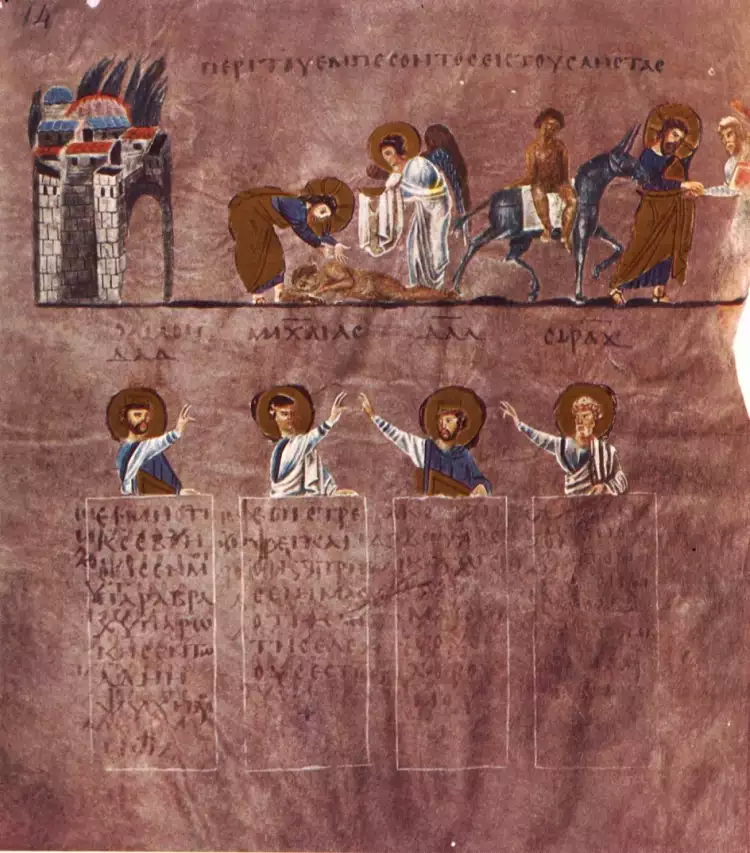 Byzantine art. Page from the Gospel of Rossano, 6th century
Byzantine art. Page from the Gospel of Rossano, 6th century
Key Features of Byzantine Art
Byzantine artists made an invaluable contribution to the treasury of world culture, and their creative legacy is a vast field for specialists' research. Byzantine art primarily includes works of art created in the fields of:
- Architecture.
- Sculpture.
- Mosaics.
- Painting.
- Icon painting.
- Illuminated manuscripts.
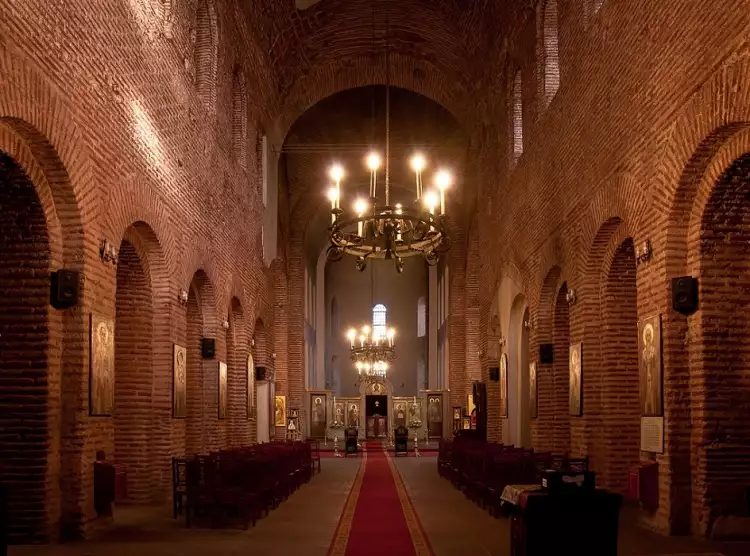 Byzantine art. Nave of the Basilica of St Sophia in the capital of Bulgaria, early 6th century
Byzantine art. Nave of the Basilica of St Sophia in the capital of Bulgaria, early 6th century
One of the most distinctive features of Byzantine architecture was the change in the concept of constructing buildings for religious worship. In the ancient era, a temple was a terrestrial abode for one of the numerous gods, but in the Christian world, it transformed into a place for prayer and communion with God. Accordingly, the rules for the interior decoration of churches changed, making their interiors more diverse and majestic, while architects paid less attention to the facades. The most famous example of architecture from that era is the Hagia Sophia in Constantinople, which the Turks converted into the Hagia Sophia Grand Mosque after capturing the city.
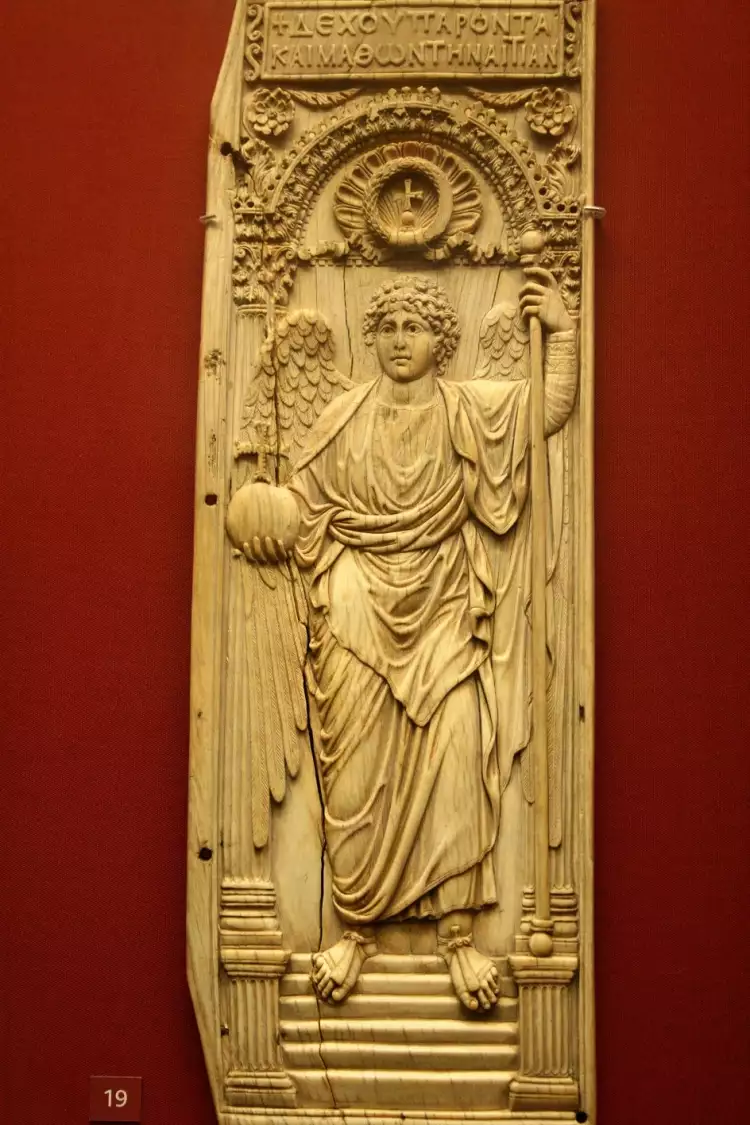 Byzantine art. An ivory relief depicting an archangel, 6th century
Byzantine art. An ivory relief depicting an archangel, 6th century
In sculpture, the achievements of the Byzantines were rather modest. Moreover, according to Christian philosophy, statues were considered elements of idolatry, and by the 9th century, they had ceased to be placed in churches. Relief images were only common as decorative elements on the exteriors of buildings, and classical sculptural compositions almost entirely disappeared from cultural life.
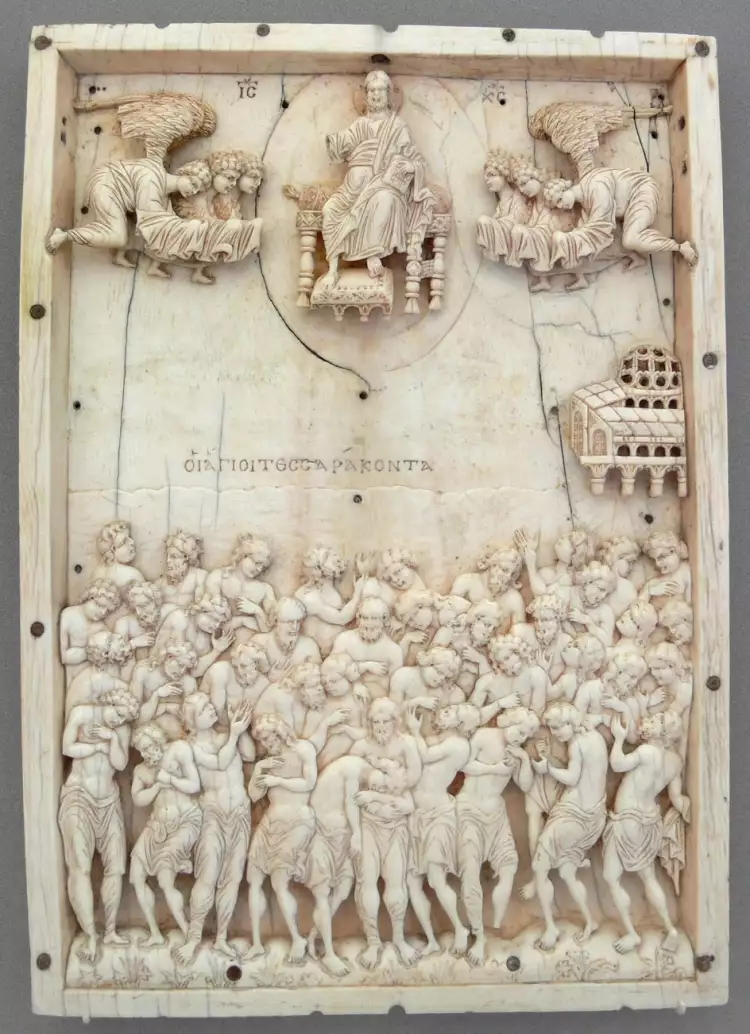 Byzantine art. Ivory relief panel of the Forty Martyrs of Sebastia, 10th century A.D.
Byzantine art. Ivory relief panel of the Forty Martyrs of Sebastia, 10th century A.D.
On the other hand, mosaics in the Byzantine Empire were the primary technique for artistic embellishment of churches for a long time. To this day, large mosaic panels preserved in various parts of Europe impress our contemporaries with the magnificence of their colors and forms.
The surviving paintings from the time of Byzantium are mainly represented by unique fresco paintings, which gradually displaced mosaics from churches in the second millennium AD. However, only a negligible number of frescoes have survived to this day in good condition, and most of them are irretrievably lost to posterity.
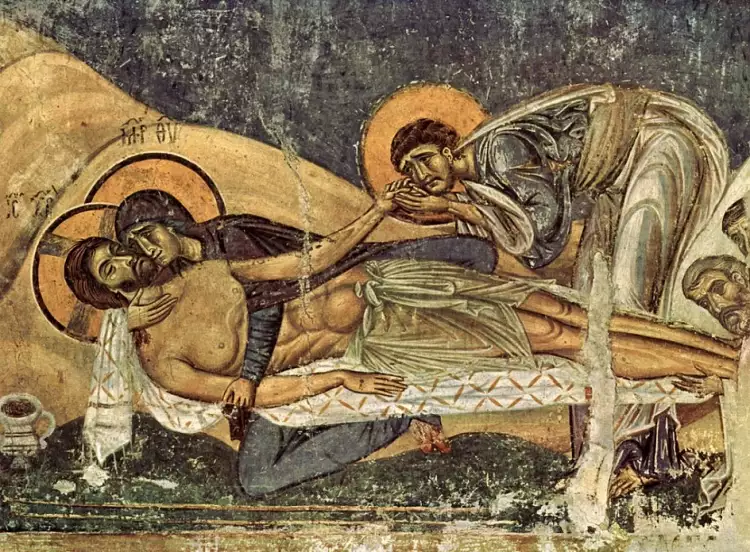 Byzantine art. Frescoes in Nerezi near Skopje, 11th century
Byzantine art. Frescoes in Nerezi near Skopje, 11th century
Icon painting, for most of the history of the Byzantine Empire, was unequivocally considered the most important form of art. The church strictly monitored compliance with the canons for the depiction of sacred images, ruthlessly punishing artists for the slightest signs of free thought. Under the influence of Byzantine masters, original icon painting schools emerged in many corners of Eastern Europe, and the masterpieces created by ancient artists are worth a fortune today.
Illuminated manuscripts also constitute an important part of Byzantine cultural heritage. Manuscripts on religious themes, adorned with skillful miniatures and ornaments, were created by monks throughout the empire over many years. The art of manuscript production was carefully passed down from generation to generation until the fall of the empire and the beginning of the era of printing in Europe in the mid-15th century.
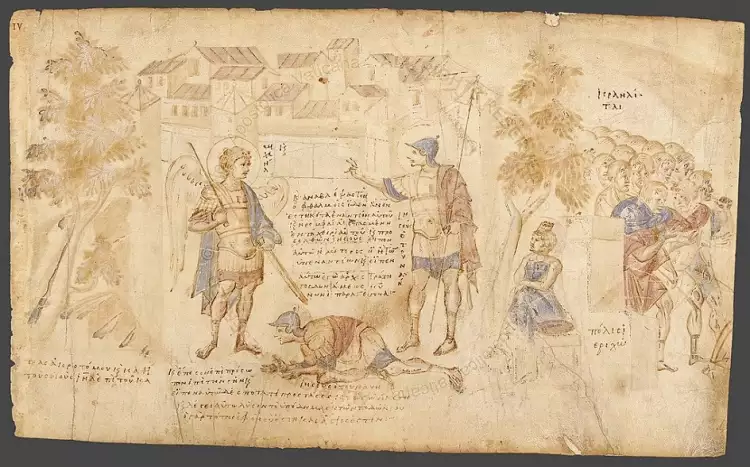 Byzantine art. Scroll of Joshua, 11th century
Byzantine art. Scroll of Joshua, 11th century
Byzantine art is not only a collection of unique masterpieces from ancient artists but also a grand part of the spiritual life of European civilization. Its millennium-long history holds numerous interesting facts for further study by grateful descendants.
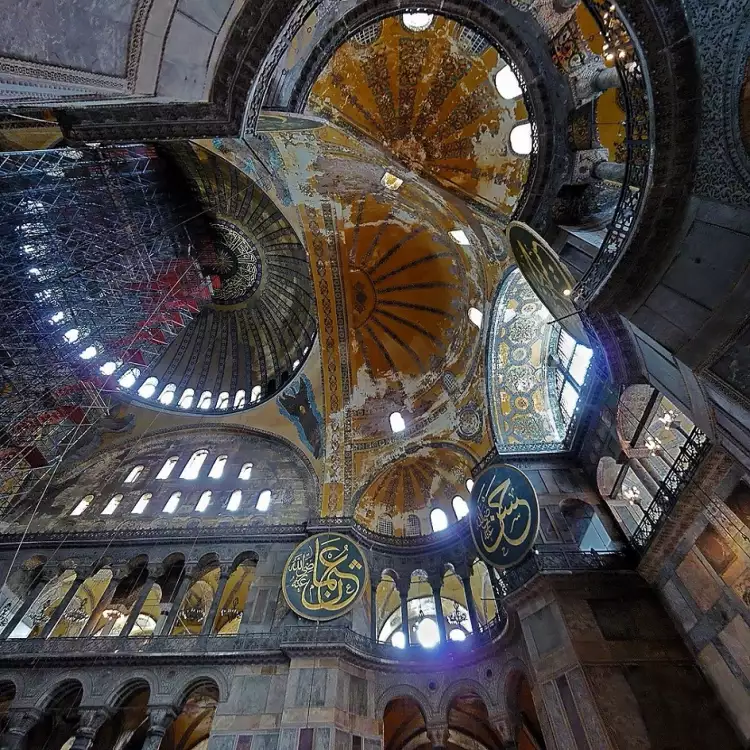
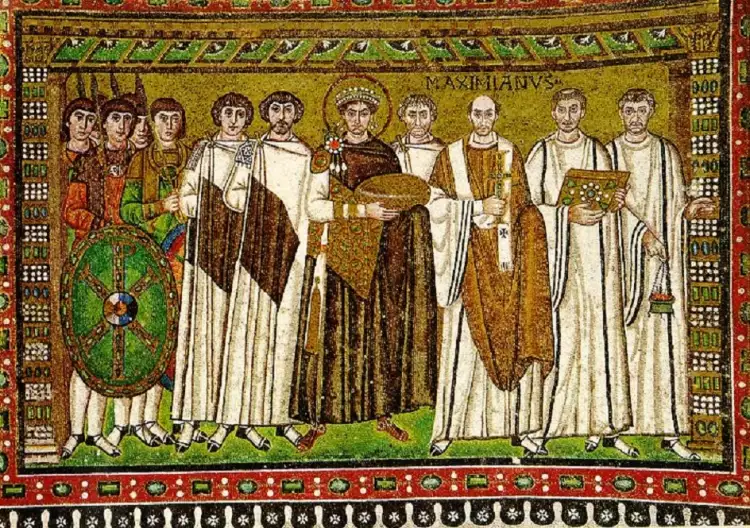
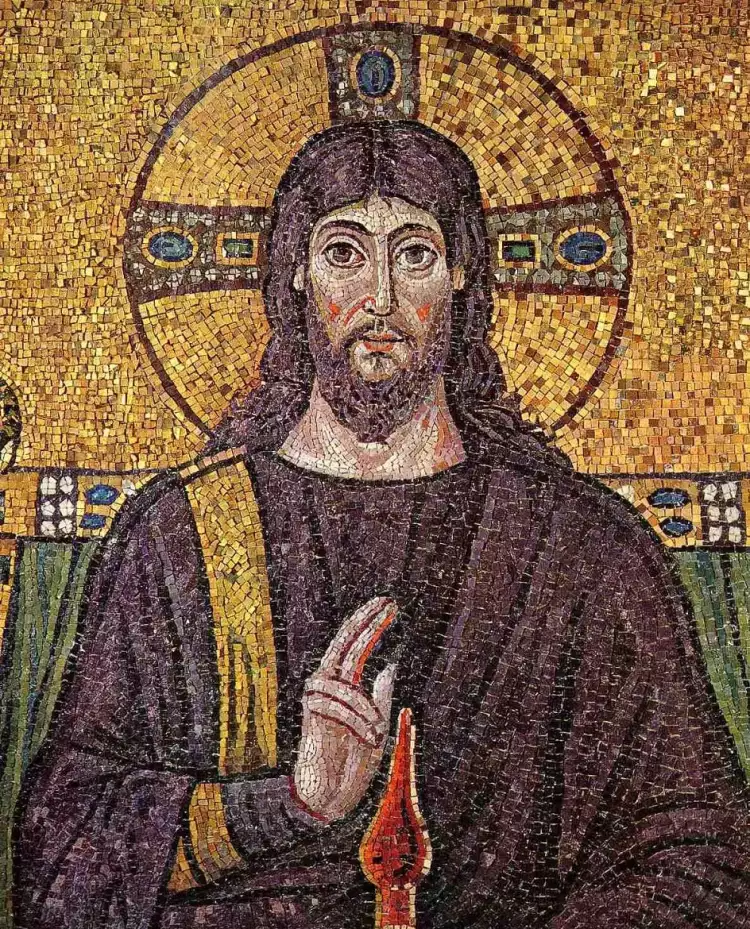
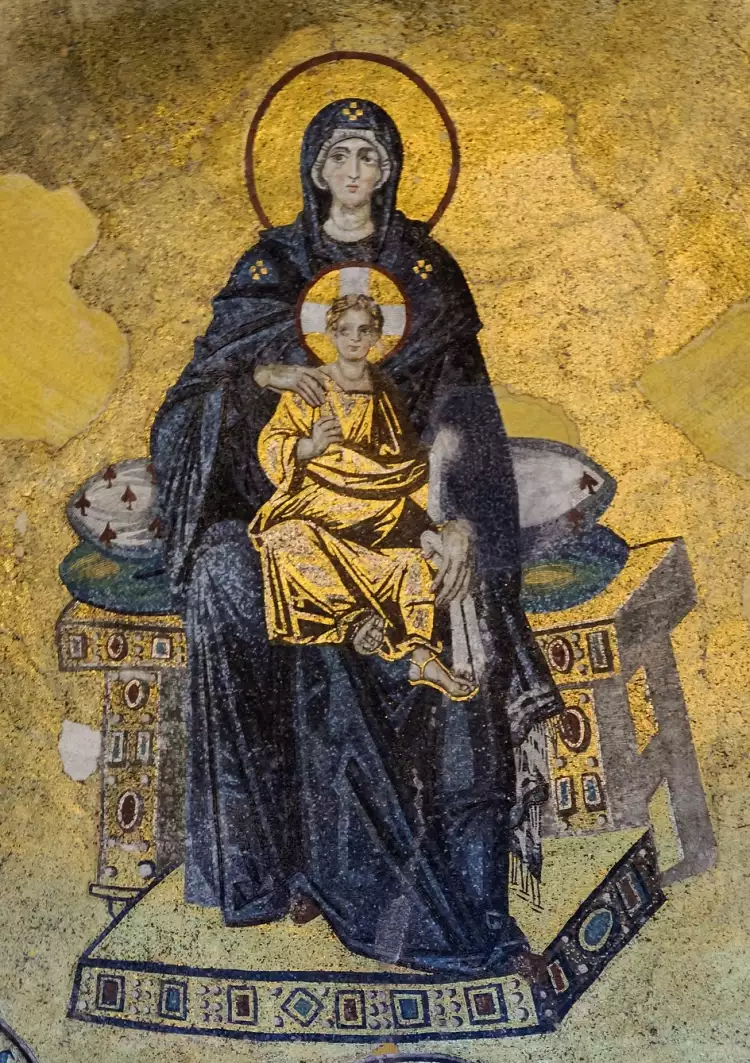
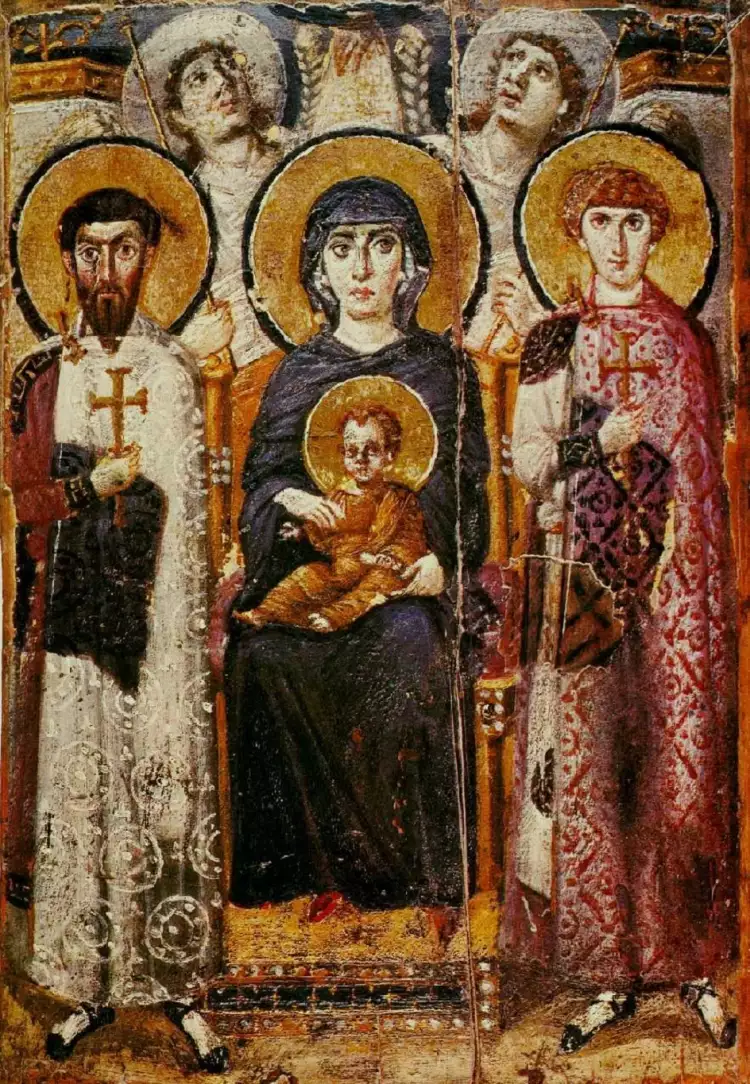
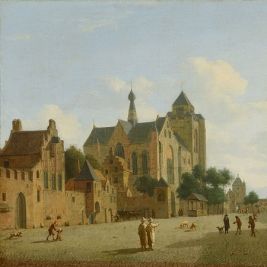 Figurative art and figurativism are antipodes of abstractionism and conceptualism
Figurative art and figurativism are antipodes of abstractionism and conceptualism 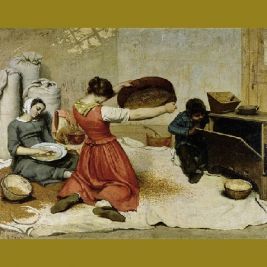 Realism - the art of portraying life in all its manifestations truthfully
Realism - the art of portraying life in all its manifestations truthfully 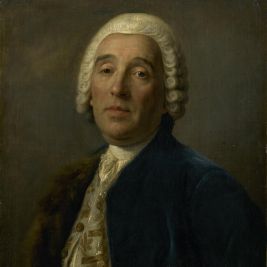 Bartolomeo Francesco Rastrelli was a brilliant Italian architect who became the greatest master of Russian architectural art of all times
Bartolomeo Francesco Rastrelli was a brilliant Italian architect who became the greatest master of Russian architectural art of all times 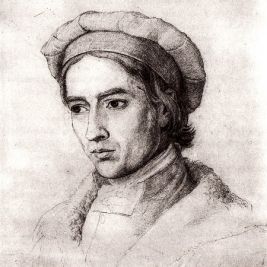 Nazarenes - romantic artists who challenged the conventions of classicism
Nazarenes - romantic artists who challenged the conventions of classicism  The religious genre is profoundly spiritual and sincere art
The religious genre is profoundly spiritual and sincere art 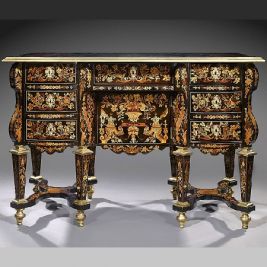 Marquetry is the elegant ancient art of inlaying veneer
Marquetry is the elegant ancient art of inlaying veneer 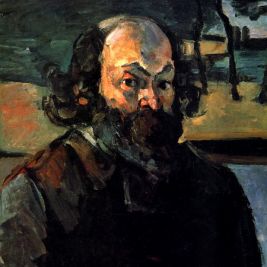 Paul Cézanne: Biography, Artistic Career, and the Artist's Masterpieces
Paul Cézanne: Biography, Artistic Career, and the Artist's Masterpieces 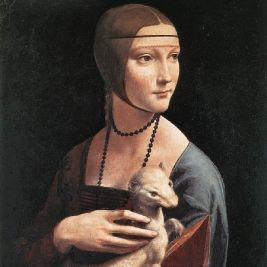 The top 10 most famous Italian artists - the greatest masters of painting in Italy of all time
The top 10 most famous Italian artists - the greatest masters of painting in Italy of all time  The Rise of Generative Art: Bridging Technology and Creativity
The Rise of Generative Art: Bridging Technology and Creativity  Battle genre in painting: heroic battles and anti-war pathos
Battle genre in painting: heroic battles and anti-war pathos